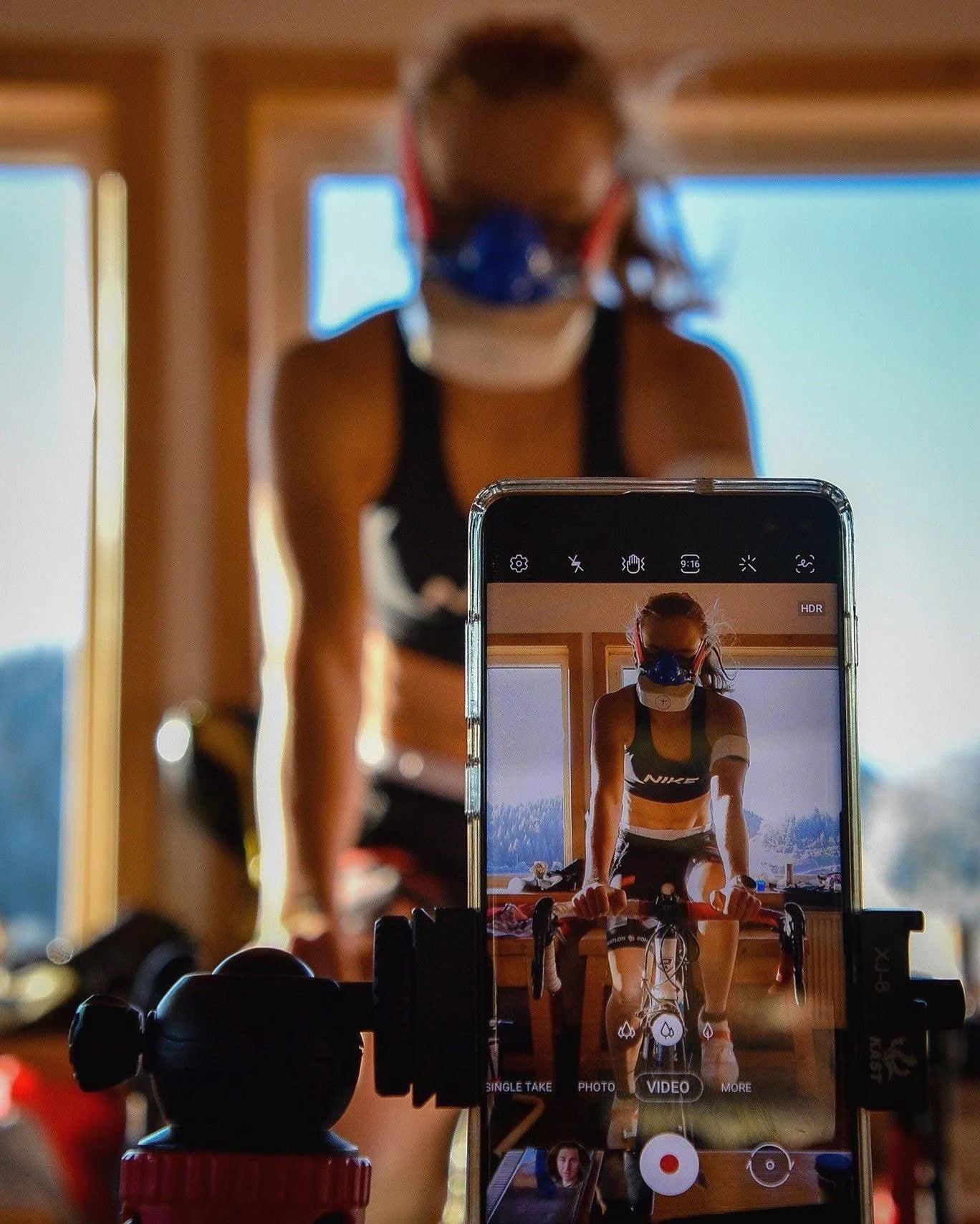These are pretty common questions when you get back to the locker room or come home after a run. How did you experience your training intensity? Small talk is easy, but did you give it your all? Subjectively you might think you did, when using a heart rate monitor you can already support this feeling by a numerical value but is this all-encompassing?
During strength training it might seem as if gravity changes on a daily basis, but 50kg is always 50kg. Your heart rate will not reflect the perceived effort in a proper way, since your heart distributes blood all over the body and typically only a small region of your body requires extra attention.
During endurance training we can see a similar tendency when the activity requires more strength. A lower cadence or hill-repeats can cause regional fatigue which is not apparent in heart rate alone. Zooming in onto trail-running, there is a clear difference in subjective effort and heart rate when running in a hilly terrain. Ascends are hard, descends are easy but your heart rate stays relatively stable throughout your training.
When it comes to quantifying fatigue and exercise intensity, there are multiple ways to skin a cat. The two most basic ways to measure exercise intensity are already touched upon;
By feel and by heart rate.
In this article we’re going to evaluate whether your feel and heart rate are an adequate representation of exercise intensity
Training intensity is a subjective measurement
The same physical output for two individuals, does not mean the same physical intensity. A jog for Usain Bolt is most likely a sprint for recreational athletes.
Even in the exact same physiological state, the intensity is not always experienced the same. Every athlete has encountered good days and bad days – where the actual performance might be similar, but the perceived effort differed significantly. How hard the activity feels can be described by a numerical value on a predefined scale. This is known as your Rate of Perceived Exertion, RPE. Most commonly used is the scale from 1-10, where 1 is a very light effort and 10 is a max effort. This scale originated from Gunnar Borg’s rating of perceived exertion scale which rated exertion from 6 (no exertion) to 20 (max exertion).
The biggest disadvantage is the fact that RPE is a subjective value. Being correct in grading your own exertion takes practice and time and is subjected to change over time. Studies show however, that RPE can accurately describe exercise intensity during the actual activity itself.
What feels easy today might be difficult tomorrow. But after a double espresso it suddenly becomes easy again. Adding a physiological parameter can be really helpful in eliminating the uncertainties in your own perception of exertion.
How can you objectively measure your training intensity?
A more objective measure of exercise intensity is your heart rate. The number of times your heart beats, typically expressed in beats per minute, BPM. A higher heart rate means that both your oxygen uptake and energy expenditure are higher. Meaning the exercise is more intense.
It is not only during exercise that you need your heart; your heart is always pumping. Your brain and vital organs need a continuous supply of oxygen and nutrients in order to survive. Typical values range between 60-100 bpm at rest, but athletes with a better cardiovascular fitness and efficient heart function might have a normal rest heart rate way below 60 bpm.
The upper limit of your cardiovascular system determines your maximum heart rate. It is not only the number of times your heart can beat per minute, but also the circulatory system, your heart and blood vessels, that play a major role. A higher maximum heart rate does not necessarily mean you are better trained. There are many formulas to calculate a ballpark maximum heart rate based on the athletes’ gender and age, but your genes, size, general fatigue and even elevation level are all factors that need to be considered.
The best way to determine your physical capabilities and maximum heart rate would be during a supervised laboratory test. Experienced athletes could opt for field tests, or even races, but this should only be attempted by trained individuals who are knowledgeable and know their own body.
Once you know your minimum and maximum heart rate values there are numerous ways to determine the intensity of your actual training, for example by heart rate zones.
Heart rate ranges/zones can be coupled to types of intensity, e.g. below 60% of your max is an easy activity. Which provides insight during the activity, as well as afterwards. In contrast to RPE, this is not subjective but there are still several challenges and physiological principles to consider.
What are the challenges you face when monitoring your heart rate during intense training?
During very intense efforts where most of your energy comes from anaerobic energy systems, heart rate readings can be misleading. Not only is the response rather slow, your heart rate will also spike after the end of your max effort. The heart rate is actually an overestimation of the oxygen consumption and energy expenditure.
The coffee that altered your RPE, actually has an influence on your heart rate as well. There are many elements that directly or indirectly have an influence on your heart rate, think about nutrients and supplements, but also your mental well-being, temperature, elevation, water pressure, etc.
An integrated set-up using your RPE and heart rate can tackle some of these problems, but there are still challenges that cannot be faced with this set-up alone.
When exercise intensity changes, it is hard to determine how intense the session was by feel and your heart rate signal is simply too slow.
This is where NIRS provides a valuable addition for your training
Your local muscle oxygenation responds much faster to intensity changes, since it is your muscle that consumes more energy and needs more blood and nutrients. Your muscle tissue oxygenation decreases when your intensity increases.
Why add NIRS sensors to your current set-up?
Measure local fatigue, your heart rate is a global parameter whereas NIRS measures the involved part, directly. Back-up your perceived exertion, by science.
In our next blog we will be explaining more about the technology and science behind these principles and how it can benefit you during your exercise/training.



